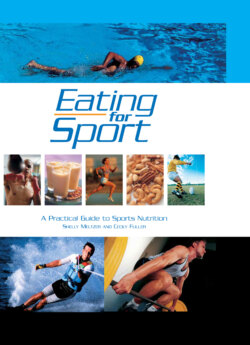Читать книгу Eating for Sport - Shelly Meltzer - Страница 15
На сайте Литреса книга снята с продажи.
FOOD SOURCES
ОглавлениеAll fat-containing foods provide a mixture of fats (saturated, mono- and polyunsaturated fats). All these fats are equally rich in calories and are easily converted and stored as body fat. There is, however, some recent evidence that the polyunsaturated fats (found in foods like sunflower oil and fatty fish) are the most easily oxidized (burnt). Therefore, when planning your ‘daily fat budget’ you should always give preference to polyunsaturated fats and the ‘healthy’ mono-unsaturated fats (found in foods like olive oil, canola oil and avocado pear and nuts) and reduce your intake of foods rich in saturated fats like fatty meat, chicken skin, coconut, full cream dairy products, lard and ghee. Another reason to limit your saturated fatty acid intake is that it increases blood cholesterol levels the most. Cholesterol is only found in foods of animal origin and, like saturated fats, should be limited because it is converted into blood cholesterol.
The total amount of fat (in grams) that you need depends on your total energy requirements, body composition goals, sport type, and other risk factors. Broadly speaking, every plate of food you eat should provide 20–30% of energy from fat, but it is important to note that some of this fat will be provided by protein (cheese, meat, chicken, fatty fish, full-and low-fat dairy foods) and what is often referred to as hidden fats in snacks and sauces (see p19).
Practical tips
1. Limit your intake of both ‘added’ and ‘hidden’ sources of fat. Butter, margarine, avocado pear, peanut butter and oil are examples of added fats, whereas hidden fats are those found in high-fat cheeses, many processed meats such as polony and salami and snack items such as chocolates, crisps and nuts.
2. Try not to double-up on fat at a meal. Choose between peanut butter, margarine or avocado pear as a spread on bread and choose either olives or salad dressing with salad.
3. Read labels to get an indication of the fat content in food and always choose the lower fat options.
4. Use low-fat cooking methods (grill with little oil, stir-fry, steam or oven-bake).
5. Vegetable sources of fat such as sunflower, olive or canola oils and spreads are healthier than hard margarine or butter.
